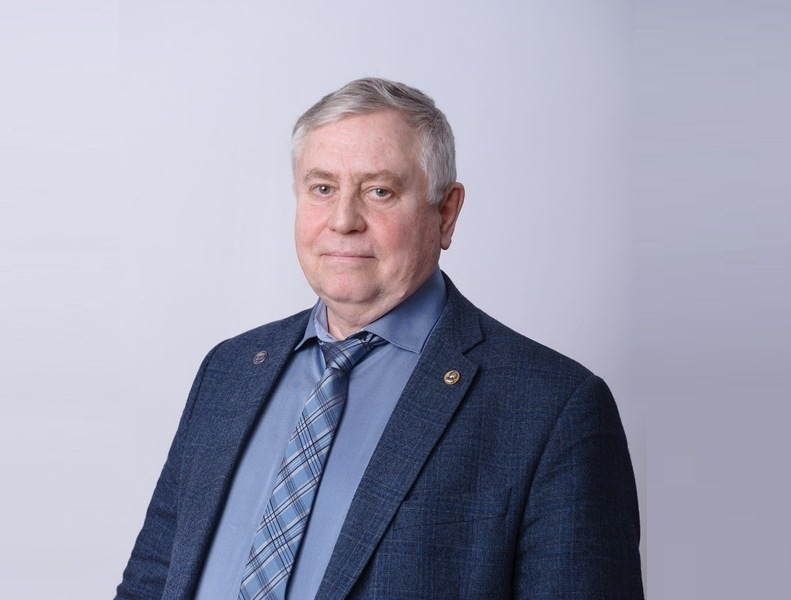Modelling Circulation in Blood Vessel Aneurysms
https://doi.org/10.23947/2587-8999-2025-9-3-30-43
Abstract
Introduction. A two-dimensional hydrodynamic problem in the «stream function–vorticity» variables is numerically solved in an open rectangular cavity simulating blood flow in a blood vessel aneurysm. Two solution algorithms are proposed for Reynolds numbers Re < 1 and for Re ≥ 1.
Materials and Methods. To accelerate the numerical solution with an explicit finite-difference scheme for the vorticity dynamics equation, the initial condition damping method, the n-fold splitting method of the explicit finite-differences cheme (n = 100, 200), and the symmetry plane of the rectangular cavity–aneurysm were employed. In the splitting method, the maximum time step proportional to the square of the spatial step was used without violating the spectral stability of the explicit scheme in the vorticity equation. On half of the rectangular aneurysm, symmetric solutions were considered with a uniform 100 × 50 grid and equal steps h1 = h2 = 0.01. The inverse matrix for solving the Poisson equation in the «stream function–vorticity» variables with a finite number of elementary operations was computed using the MSIMSL library.
Results. The numerical solution showed that the number and location of circulation regions in the aneurysm at small Reynolds numbers depend on the ratio of the vessel diameter to the aneurysm diameter. At small values of this parameter, the aneurysm contains a single large vortex that narrows the vessel lumen in the case of thrombus formation inside the aneurysm. The narrowing of the blood flow tube inside the aneurysm reaches 34%. It was found that the formation of the hydrodynamic structure in the aneurysm occurs in a time negligible (0.002%) compared to the period between pulsation waves (1 s). For the first time, a boundary condition with fourth-order accuracy was proposed to relate velocity, vorticity, and stream function.
Discussion. The approximation of the equations in systems (4) and (22) has sixth-order accuracy at interior nodes and fourth-order accuracy at boundary nodes. The problem was also solved for blood motion in arteries at high Reynolds numbers (Re = 1500). The solution shows that in the aneurysm symmetry plane a chain of connected vortices is formed with alternating signs of vorticity, carried by the blood flow along the vessel.
Conclusion. The initial–boundary value problems (4), (22) formulated in this work make it possible to qualitatively model blood flow in aneurysms of capillaries, arterioles, and arteries at low and high velocities, as well as blood motion in elements of medical equipment.
About the Authors
N. K. VolosovaRussian Federation
Natalya K. Volosova, Post-graduate Student
2nd Baumanskaya St. 5‒1, Moscow, 105005
K. A. Volosov
Russian Federation
Konstantin A. Volosov, Doctor of Physical and Mathematical Sciences, Professor of the Department of Applied Mathematics
Obraztsova St. 9‒9, Moscow, GSP-4, 127994
А. K. Volosova
Russian Federation
Aleksandra K. Volosova, Candidate of Physical and Mathematical Sciences, Chief Analytical Department «Tramplin» LLC
Obraztsova St. 9‒9, Moscow, GSP-4, 127994
M. I. Karlov
Russian Federation
Mikhail I. Karlov, Candidate of Physical and Mathematical Sciences, Associate Professor of the Department of Mathematics
9, Institutsky Lane, GSP-4, Dolgoprudny, 141701
D. F. Pastukhov
Belarus
Dmitriy F. Pastukhov, Candidate of Physical and Mathematical Sciences, Associate Professor
Blokhin St. 29, Novopolotsk, 211440
Yu. F. Pastukhov
Belarus
Yuriy F. Pastukhov, Candidate of Physical and Mathematical Sciences,Associate Professor
Blokhin St. 29, Novopolotsk, 211440
References
1. Salih A. Streamfunction — Vorticity Formulation. Department of Aerospace Engineering Indian Institute of Space Science and Technology. 2013;10:1–10.
2. Volosova N.K., Volosov K.A., Volosova A.K., Karlov M.I., Pastukhov D.F., Pastukhov Yu.F. Comparison of solution of the hydrodynamic problem in a rectangular cavity methods of inhibition and acceleration of the initial speed field. Computational Mathematics and Information Technologies. 2025;9(2):22–33 (In Russ.) https://doi.org/10.23947/2587-8999-2025-9-2-22-33
3. Petrov A.G. High-precision numerical schemes for solving plane boundary value problems for a polyharmonic equation and their application to problems of hydrodynamics. Applied Mathematics and Mechanics. 2023;87(3):343–368 (In Russ.) https://doi.org/10.31857/S0032823523030128
4. Sukhinov A.I., Kolgunova O.V., Ghirmay M.Z., Nahom O.S. A two-dimensional hydrodynamic model of coastal systems, taking into account evaporation. Computation Mathematics and Information Technologies. 2023;7(4):9–21. https://doi.org/10.23947/2587-8999-2023-7-4-9-21
5. Ershova T.Ya. Boundary value problem for a third-order differential equation with a strong boundary layer. Bulletin of Moscow University. Episode 15: Computational mathematics and cybernetics. 2020;1:30–39 (In Russ.) https://doi.org/10.3103/S0278641920010057
6. Sitnikova M.A., Skulsky O.I. Flow of momentary anisotropic fluid in thin layers. Bulletin of Perm University. Mathematics. Mechanics. Informatics. 2015;28(1):56–62 (In Russ.)
7. Volosov K.A., Vdovina E.K., Pugina L.V. Modeling of “pulsatile” modes of blood coagulation dynamics. Math modeling. 2014;26(12):14–32 (In Russ.)
8. Sidoryakina V.V., Solomaha D.A. Symmetrized versions of the Seidel and upper relaxation methods for solving twodimensional difference problems of elliptic. Computational Mathematics and Information Technologies. 2023;7(3):12– 19. (In Russ.) https://doi.org/10.23947/2587-8999-2023-7-3-12-19
9. Volosova N.K., Volosov K. A., Volosova A.K., Karlov M.I., Pastuhov D.F., Pastuhov Yu.F. The N-fold distribution of the obvious variable scheme for the equalization of the vortex in the viscous incompatible fluid. Bulletin of the Perm University. Mathematics. Mechanics. Informatics. 2023;63(4):12–21 (In Russ.) https://doi.org/10.17072/1993-0550-2023-4-12-21
10. Bahvalov N.S., Zhidkov N.P., Kobelkov G.M. Numerical methods: a textbook for students of physics and mathematics specialties of higher educational institutions Binom. lab. Moscow: Knowledge; 2011. 636 p. (In Russ.)
Review
For citations:
Volosova N.K., Volosov K.A., Volosova А.K., Karlov M.I., Pastukhov D.F., Pastukhov Yu.F. Modelling Circulation in Blood Vessel Aneurysms. Computational Mathematics and Information Technologies. 2025;9(3):30-43. https://doi.org/10.23947/2587-8999-2025-9-3-30-43











